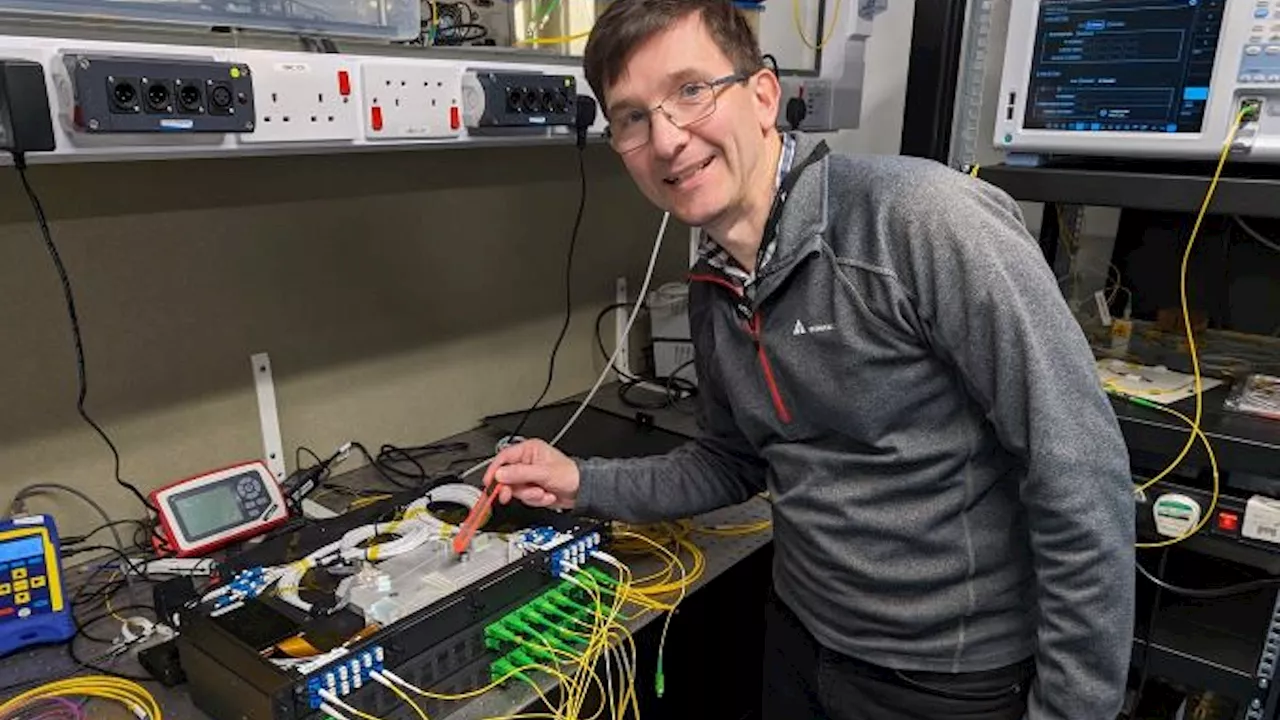Researchers have developed an innovative platform that uses exceptional points to enhance the sensitivity of conventional optical sensors.
Researchers at Washington University in St.Louis have unveiled a novel method to enhance the sensitivity of conventional optical sensors.
Optical sensors use light to detect changes in the properties of the environment they’re monitoring. These changes include chemical biomarkers and physical properties like temperature. However, they have long grappled with the challenge of detecting faint signals amid noise.Lan Yang, Edwin H. and Florence G. Skinner Professor in the Preston M. Green Department of Electrical and Systems Engineering, and her doctoral student Wenbo Mao have developed an EP-enhanced sensing platform.
An innovative platform, featuring a control unit operated at an exceptional point , has been developed to enhance the performance of conventional optical sensors. , identified in non-Hermitian systems, offer great potential for advanced sensors, given their marked response to perturbations. However, strict physical requirements for operating a sensor at EPs limit broader applications.
Indonesia Berita Terbaru, Indonesia Berita utama
Similar News:Anda juga dapat membaca berita serupa dengan ini yang kami kumpulkan dari sumber berita lain.
 Innovative sensing platform unlocks ultrahigh sensitivity in conventional sensorsOptical sensors serve as the backbone of numerous scientific and technological endeavors, from detecting gravitational waves to imaging biological tissues for medical diagnostics. These sensors use light to detect changes in the properties of the environment they're monitoring, including chemical biomarkers and physical properties like temperature.
Innovative sensing platform unlocks ultrahigh sensitivity in conventional sensorsOptical sensors serve as the backbone of numerous scientific and technological endeavors, from detecting gravitational waves to imaging biological tissues for medical diagnostics. These sensors use light to detect changes in the properties of the environment they're monitoring, including chemical biomarkers and physical properties like temperature.
Baca lebih lajut »
 Innovative sensing platform unlocks ultrahigh sensitivity in conventional sensorsEngineers unlock the power of exceptional points (EPs) for advanced optical sensing. EPs -- specific conditions in systems where extraordinary optical phenomena can occur -- can be deployed on conventional sensors to achieve a striking sensitivity to environmental perturbations.
Innovative sensing platform unlocks ultrahigh sensitivity in conventional sensorsEngineers unlock the power of exceptional points (EPs) for advanced optical sensing. EPs -- specific conditions in systems where extraordinary optical phenomena can occur -- can be deployed on conventional sensors to achieve a striking sensitivity to environmental perturbations.
Baca lebih lajut »
 Researchers unlock fiber optic connection 1.2 million times faster than broadbandAndrew Paul is Popular Science‘s staff writer covering tech news. Previously, he was a regular contributor to The A.V. Club and Input, and has had recent work featured by Rolling Stone, Fangoria, GQ, Slate, NBC, as well as McSweeney’s Internet Tendency. He lives outside Indianapolis.
Researchers unlock fiber optic connection 1.2 million times faster than broadbandAndrew Paul is Popular Science‘s staff writer covering tech news. Previously, he was a regular contributor to The A.V. Club and Input, and has had recent work featured by Rolling Stone, Fangoria, GQ, Slate, NBC, as well as McSweeney’s Internet Tendency. He lives outside Indianapolis.
Baca lebih lajut »
 Follow-up MRI shows fracture in foot of Yankees' LeMahieuAaron Boone declined to share the projected timetable for DJ LeMahieu's return but said he still could join the Yankees sometime in April.
Follow-up MRI shows fracture in foot of Yankees' LeMahieuAaron Boone declined to share the projected timetable for DJ LeMahieu's return but said he still could join the Yankees sometime in April.
Baca lebih lajut »
 Red Sox SS Trevor Story injured on diving stop, awaits MRIRed Sox shortstop Trevor Story said he had 'a lot of frustration' after injuring his left shoulder on a diving stop Friday night against the Angels.
Red Sox SS Trevor Story injured on diving stop, awaits MRIRed Sox shortstop Trevor Story said he had 'a lot of frustration' after injuring his left shoulder on a diving stop Friday night against the Angels.
Baca lebih lajut »
 Could an MRI scan make prostate cancer screening more accurate?Screening for prostate cancer with the PSA blood test can sometimes lead to unnecessary and harmful treatment, but new proposals could mitigate the issue of overdiagnosis
Could an MRI scan make prostate cancer screening more accurate?Screening for prostate cancer with the PSA blood test can sometimes lead to unnecessary and harmful treatment, but new proposals could mitigate the issue of overdiagnosis
Baca lebih lajut »
